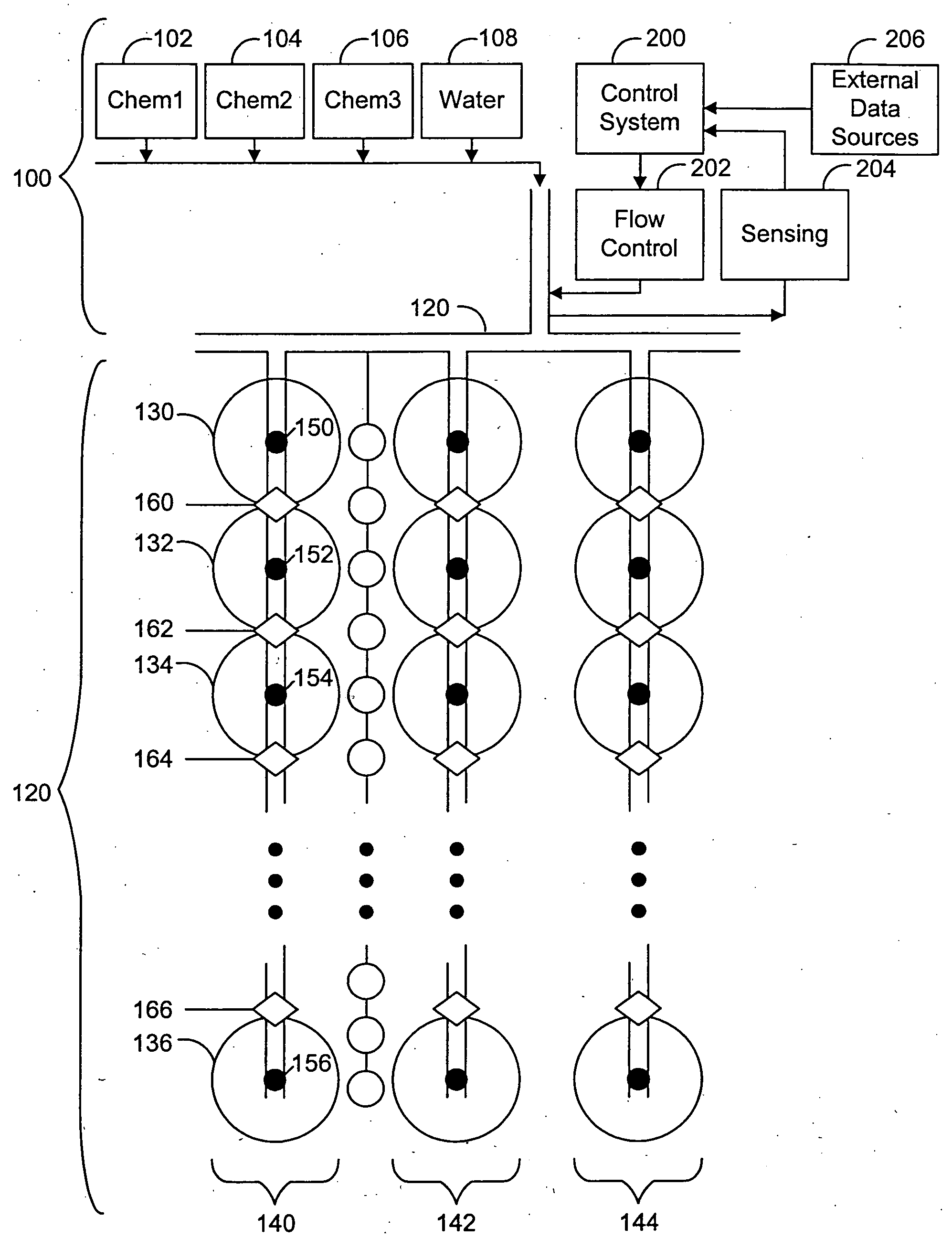Conduit including sensors for monitoring and maintenance of vegetation
a technology of vegetation and sensors, applied in the field of automated control, can solve the problems of not providing a high level of automation, difficult to selectively provide different amounts of water to different plants, plant rows or areas, and overall irrigation process, so as to achieve accurate control
- Summary
- Abstract
- Description
- Claims
- Application Information
AI Technical Summary
Benefits of technology
Problems solved by technology
Method used
Image
Examples
Embodiment Construction
[0023]FIG. 1 illustrates the system of the present invention. A preferred embodiment of the system is referred to as the “Chemical on Demand” system manufactured and marketed by Terra Spase, Inc.
[0024] In FIG. 1, system 100 is used to deliver materials such as chemicals 102, 104 and 106; and water 108 to crops 110 via conduit 120. Examples of chemicals for delivery are fertilizer, insecticides, disease prevention fungicides or other treatments, etc. For purposes of illustration, the invention will be presented in a vineyard application. However, it should be apparent that aspects of the invention can be applied to many different crops, plants and other scenarios.
[0025] Each grapevine plant is illustrated as a circle such as vines 130, 132, 134 and 136. Vines are organized into rows such as row 140, 142 and 144. Naturally, there can be any number of vines in a row and any number of rows. Although modern vineyards follow this row and grid pattern, the present invention can be adapte...
PUM
 Login to View More
Login to View More Abstract
Description
Claims
Application Information
 Login to View More
Login to View More - R&D
- Intellectual Property
- Life Sciences
- Materials
- Tech Scout
- Unparalleled Data Quality
- Higher Quality Content
- 60% Fewer Hallucinations
Browse by: Latest US Patents, China's latest patents, Technical Efficacy Thesaurus, Application Domain, Technology Topic, Popular Technical Reports.
© 2025 PatSnap. All rights reserved.Legal|Privacy policy|Modern Slavery Act Transparency Statement|Sitemap|About US| Contact US: help@patsnap.com



